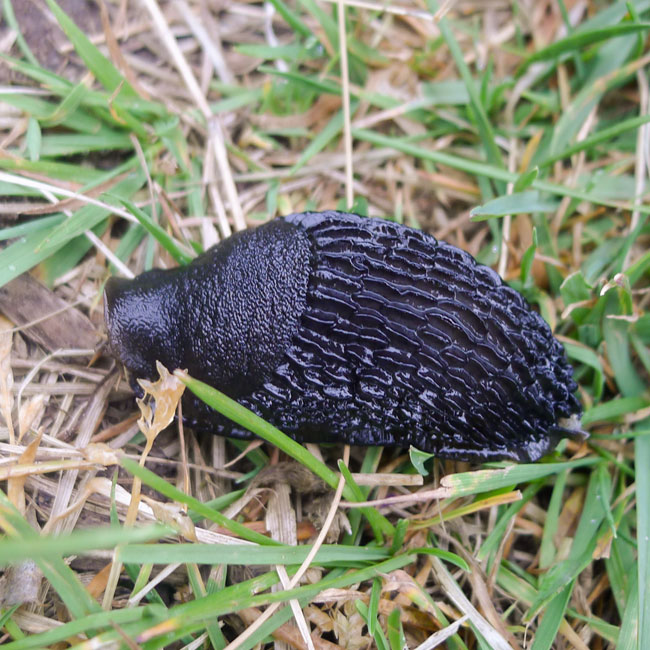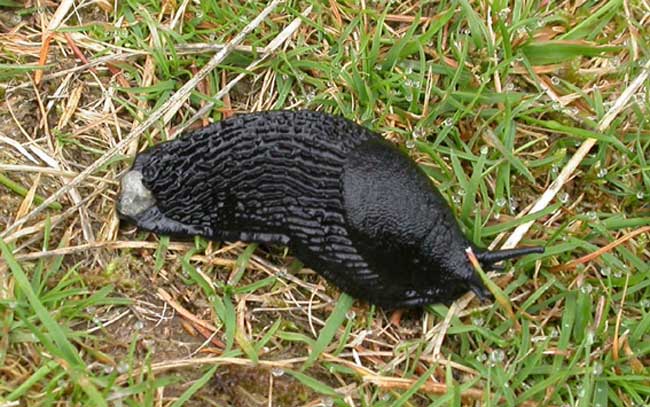
|
Black Slug
|
||
|
Taken at Pow Burn on
26th May 2019 using Panasonic Lumix LX5 in macro mode.
|
 |
|

| Taken at Achnabreck in the Summer of 2007 using Nikon D40X with Nikon 300 mm zoom lens. |  |

| Black Slug. |
| Species: Order: Family: Local Names: |
Arion ater. Pulmonata. Arionidae. |
| Description: Length: Food: Habitat: Feature |
Like all other species of the Arionidae
family, the black slug is a
hermaphrodite, meaning it can fertilize
itself if needed, although a mate is preferred. After mating, the slug
lays eggs
about 5 mm in diameter.The favoured
location for eggs is a dark, cold, damp
place such as a compost heap. 10 - 15 cms. Decomposting matter, such as leaves, fungus, decaying vegetable material and carrion. Moist environment. In the past two decades, it's mating with Arion lusitanicus (or Spanish slug) has resulted in a more resilient hybrid, exhibiting increased tolerance to cold. Like snails, most slugs have two pairs of 'feelers' or tentacles on their head. The upper pair—optical tentacles—are light sensors; the lower pair provides the sense of smell. Both pairs are retractable and can be regrown if lost. |